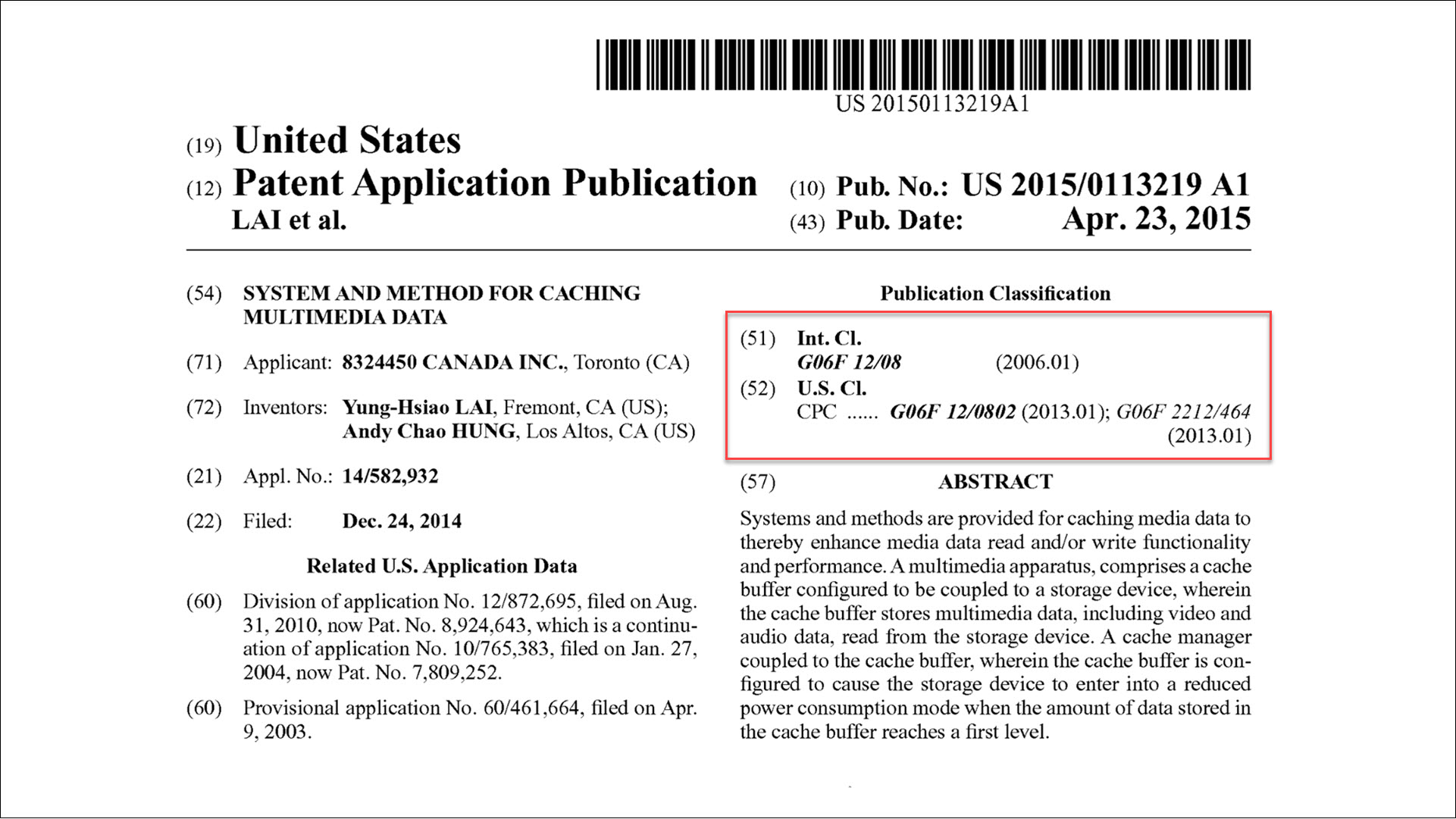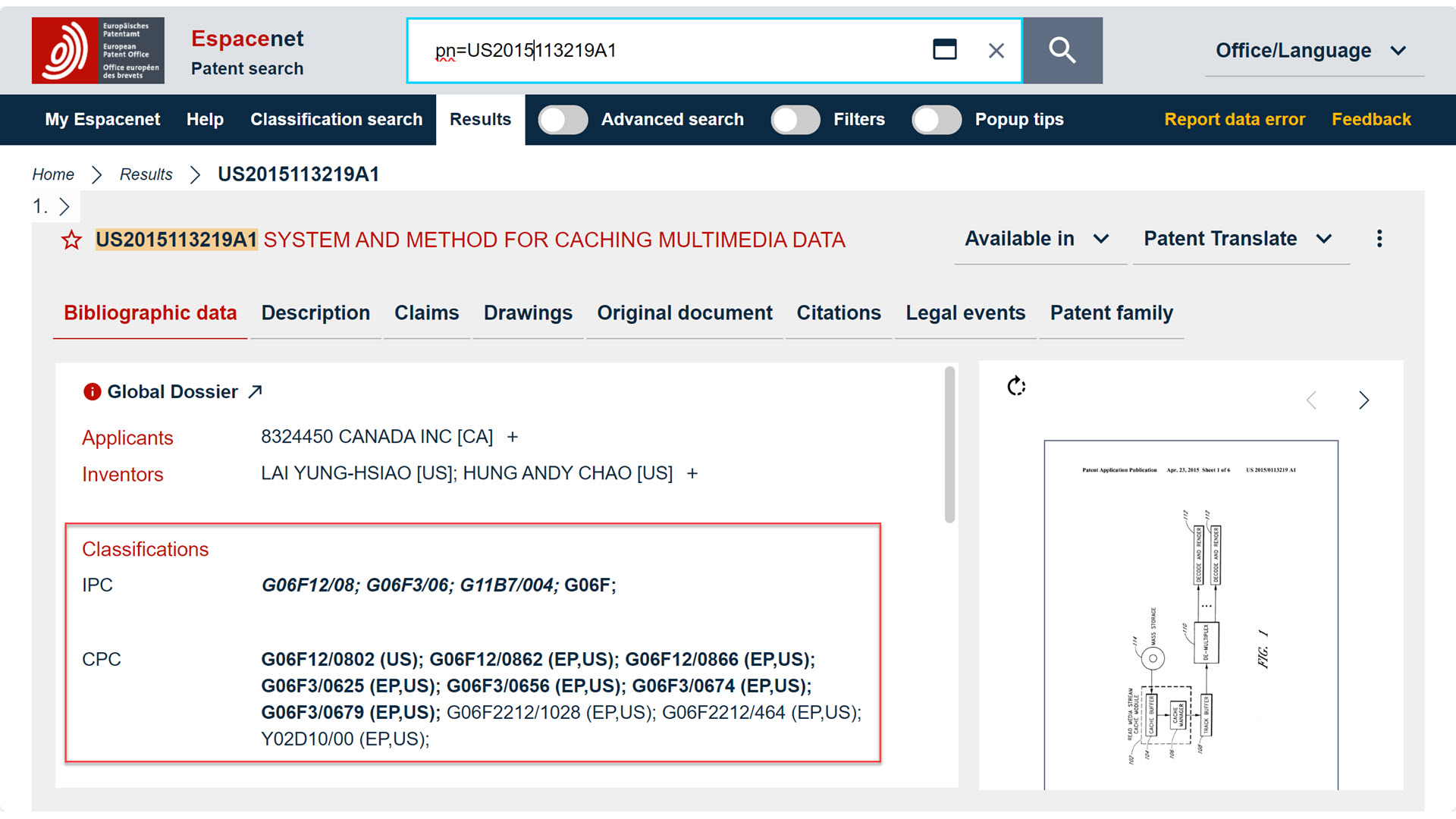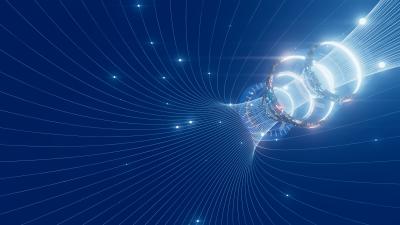Have you ever wondered …
… why you sometimes see more IPC and CPC symbols in Espacenet than on the original document?
When you compare the bibliographic data in Espacenet with those on the original document, you occasionally come across some differences in classification data according to the International Patent Classification (IPC) and the Cooperative Patent Classification (CPC) schemes. How is this possible? And what does it mean for your patent search?
Let’s take a closer look at the publication US20150113219A1.
The original US document has been assigned the IPC symbol G06F12/08 and the CPC symbols G06F12/0802 and G06F2212/464.

However, when you look at the Bibliographic data page in Espacenet, you will notice three additional IPC symbols: G06F3/06; G11B7/004 and G06F.
There is also a discrepancy in the CPC symbols, with eight additional symbols being shown.

The IPC scheme is revised each year, and the CPC scheme even more regularly, to cover new emerging technologies or relocate symbols to new and more suitable classification locations.
To facilitate your searches, documents available in patent databases, such as those in Espacenet, are reclassified to reflect the changes resulting from these revisions. As a result, it is usually no longer necessary to use previous IPC versions for searches, as was the case before the major IPC reform of 2006. Caution is, however, required, given that reclassification can sometimes experience delays. Whether you need to search for old symbols is indicated in the IPC or CPC schemes by means of "warnings". When there are no warnings in the scheme, you can just rely on the new symbols.
The reason why you may see more classification symbols on the Bibliographic data page in Espacenet than on the original document is that reclassification is performed at the family level, not at the individual document level. Therefore, all simple family members will be indexed with all reclassified symbols, and all these symbols will be displayed on the Bibliographic data page of each family member in Espacenet. If some classification symbols on an individual document did not require reclassification, you will still see these symbols at the individual level in addition to those shown for the other family members.
Keywords: IPC, CPC, classification, patent family, Espacenet
Related items

From lost in translation to insight – Part II: Office actions in machine-readable format in the EPO Global Dossier

First lecture of the year exploring the European Patent and Unitary Patent Registers

Unleash the full power of patent data

NEW ARTICLE: Why it can be difficult to find a patent document by searching by a number - and how to overcome this challenge

NEW ARTICLE: Don’t miss two essential lectures covering patent families and INPADOC legal event codes from Asia

Espacenet offers a range of materials to help users make the most of the tool

As the volume of patent documents grows worldwide, Espacenet continues to deliver open and reliable access

World Health Day 2025: Reflecting on newborn and maternal health through patent knowledge

PATSTAT EP Register documentation

Updates on the Unitary patent protection INPADOC legal events

Harmonisation of applicant names

Celebrating International Day of Happiness with a smile

Forecasting patent filings

Share your views before 17 March to help steer the Observatory’s future activities

Going round in circles on Pi Day: A short quiz for all!

Unlock powerful features to make your patent search faster, more accurate and more productive

The role of Europe in emerging technologies

Join the competition and submit your proposal by 16 March!

Celebrating the role of women and girls in science and technology communities

Unleash the full power of patent data: analysing emerging technologies

From lost in translation to insight – Part II: Office actions in machine-readable format in the EPO Global Dossier

First lecture of the year exploring the European Patent and Unitary Patent Registers

Unleash the full power of patent data

NEW ARTICLE: Why it can be difficult to find a patent document by searching by a number - and how to overcome this challenge

NEW ARTICLE: Don’t miss two essential lectures covering patent families and INPADOC legal event codes from Asia

Espacenet offers a range of materials to help users make the most of the tool

As the volume of patent documents grows worldwide, Espacenet continues to deliver open and reliable access

World Health Day 2025: Reflecting on newborn and maternal health through patent knowledge

PATSTAT EP Register documentation

Updates on the Unitary patent protection INPADOC legal events

Harmonisation of applicant names

Celebrating International Day of Happiness with a smile

Forecasting patent filings

Share your views before 17 March to help steer the Observatory’s future activities

Going round in circles on Pi Day: A short quiz for all!

Unlock powerful features to make your patent search faster, more accurate and more productive

The role of Europe in emerging technologies

Join the competition and submit your proposal by 16 March!

Celebrating the role of women and girls in science and technology communities

Unleash the full power of patent data: analysing emerging technologies

From lost in translation to insight – Part II: Office actions in machine-readable format in the EPO Global Dossier

First lecture of the year exploring the European Patent and Unitary Patent Registers

Unleash the full power of patent data